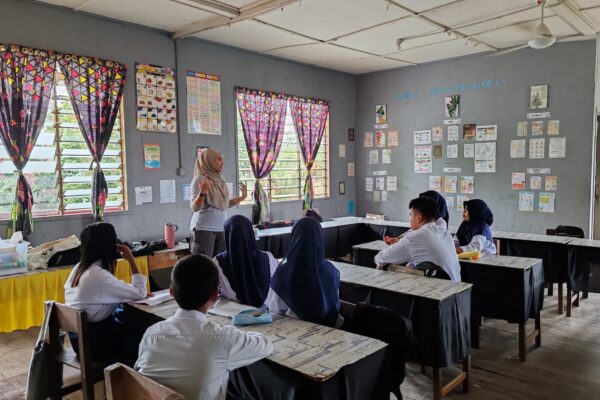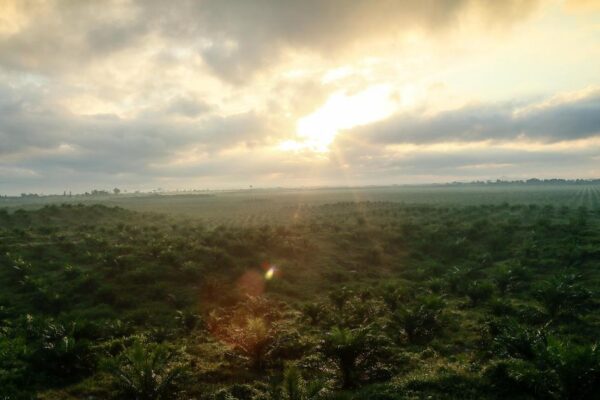In August, it was reported only 38% of North America’s 50 largest food companies disclose their scope 3 carbon emissions. Scope 3 covers indirect carbon emissions that take place within a business’s supply chain.
In the food industry this will go back as far as the farmers around the world who grow the crops and commodities which food companies and brands use in their products.
Along with scope 3 emissions, there is scope 2 – which covers indirect emissions associated with the purchasing of electricity, or heating and cooling; while scope 1 emissions occur from sources that are either controlled or owned by an organisation. The three standards are part of the Greenhouse Gas Protocols, created by the World Resources Institute and the World Business Council for Sustainable Development
The lack of scope 3 emission disclosure is telling, as research has already shown that food production is responsible for a quarter of the planet’s greenhouse gas emissions, with around 70% of these emissions coming from agriculture and associated land use. Namely, scope 3 emissions.
So we don’t just need food businesses to disclose their scope 3 emissions, we need them to proactively take action to reduce them.
There is a pressing need to do so as we know what is needed in the future. By the middle of the century, the same time as so many corporate net zero targets are to be achieved, it’s estimated we will need to produce 50% more food.
There is much to do to ensure that demand is met without driving further deforestation.
Put simply, net zero targets cannot be achieved without businesses going out there to reach, influence and support their suppliers to not just change their agricultural practices, but transform them, using regenerative agriculture to get better use of their land, in ways that don’t harm the soil and wider environment.
The report by non-profit organisation Ceres further highlights how significant scope 3 emissions are, with the world’s largest coffeehouse chain Starbucks stating that 96% of its emissions are scope 3.*
Some companies are doing better than others when it comes to getting to grips with improving practices with suppliers at the origins of their commodities. Ceres highlighted how Hershey published that 41% of its total emissions come from land use changes.
We are supporting Hershey to address this within its palm oil supply chain, through supply chain mapping, supplier engagement, changing practices – with a focus on protecting and restoring forests and strengthening the livelihoods of smallholder farmers.
Hershey also uses our Starling satellite technology to monitor the supply chains of its highest volume suppliers – you cannot change supplier practices unless you know who and where they are. Hershey’s objective is to move its palm supply chain to 100% deforestation free by 2025.
This is the kind of action and engagement we believe the food industry can carry out pretty rapidly and efficiently when it comes to scope 3 emissions.
In the US, there are discussions about making carbon disclosures a requirement for businesses.
Subsequent news on this story demonstrates how difficult it is for businesses to trace suppliers deep with their supply chain. Yet level of perceived difficulty shouldn’t be a barrier to stop efforts. As mentioned, some companies are showing it can be done.
Nor should global food businesses wait for government regulations to ascertain what level of commitment they need to provide when it comes to protecting the environment. They are sitting on vast supply chains. Yes, they are complex, with multiple layers of suppliers, but they need to find the leverage within them to carry out change at scale.
It’s about asking questions to suppliers and working hand in hand with them, which in itself is pretty straightforward.

Food production carbon emissions
The lack of scope 3 emission disclosure is telling, as research has already shown that food production is responsible for a quarter of the planet’s greenhouse gas emissions, with around 70% of these emissions coming from agriculture and associated land use. Namely, scope 3 emissions.
So we don’t just need food businesses to disclose their scope 3 emissions, we need them to proactively take action to reduce them.
There is a pressing need to do so as we know what is needed in the future. By the middle of the century, the same time as so many corporate net zero targets are to be achieved, it’s estimated we will need to produce 50% more food. There is much to do to ensure that demand is met without driving further deforestation.
Put simply, net zero targets cannot be achieved without businesses going out there to reach, influence and support their suppliers to not just change their agricultural practices, but transform them, using regenerative agriculture to get better use of their land, in ways that don’t harm the soil and wider environment.
Improving supplier practices
The report by non-profit organisation Ceres further highlights how significant scope 3 emissions are, with the world’s largest coffeehouse chain Starbucks stating that 96% of its emissions are scope 3.
Some companies are doing better than others when it comes to getting to grips with improving practices with suppliers at the origins of their commodities. Ceres highlighted how Hershey published that 41% of its total emissions come from land use changes.
We are supporting Hershey to address this within its palm oil supply chain, through supply chain mapping, supplier engagement, changing practices – with a focus on protecting and restoring forests and strengthening the livelihoods of smallholder farmers.
Hershey also uses our Starling satellite technology to monitor the supply chains of its highest volume suppliers – you cannot change supplier practices unless you know who and where they are. Hershey’s objective is to move its palm supply chain to 100% deforestation free by 2025.
Finding leverage
This is the kind of action and engagement we believe the food industry can carry out pretty rapidly and efficiently when it comes to scope 3 emissions. In the US, there are discussions about making carbon disclosures a requirement for businesses.
Yet, it is unclear whether scope 3 emissions will be included, after the chairman of the U.S. Securities and Exchange Commission stated they might not be part of any forthcoming regulation.
Subsequent news on this story demonstrates how difficult it is for businesses to trace suppliers deep with their supply chain. Yet level of perceived difficulty shouldn’t be a barrier to stop efforts. As mentioned, some companies are showing it can be done.
Nor should global food businesses wait for government regulations to ascertain what level of commitment they need to provide when it comes to protecting the environment. They are sitting on vast supply chains. Yes, they are complex, with multiple layers of suppliers, but they need to find the leverage within them to carry out change at scale.
It’s about asking questions to suppliers and working hand in hand with them, which in itself is pretty straightforward.
Improving supplier practices
The report by non-profit organisation Ceres further highlights how significant Scope 3 emissions are, with the world’s largest coffeehouse chain Starbucks stating that 96% of its emissions are Scope 3.
Some companies are doing better than others when it comes to getting to grips with improving practices with suppliers at the origins of their commodities. Ceres highlighted how Hershey published that 41% of its total emissions come from land use changes.
Finding leverage
This is the kind of action and engagement we believe the food industry can carry out pretty rapidly and efficiently when it comes to Scope 3 emissions. In the USA, there are discussions about making carbon disclosures a requirement for businesses.
Yet, it is unclear whether Scope 3 emissions will be included, after the chairman of the U.S. Securities and Exchange Commission stated they might not be part of any forthcoming regulation.
Subsequent news on this story demonstrates how difficult it is for businesses to trace suppliers deep with their supply chain. Yet, the level of perceived difficulty shouldn’t be a barrier to stop efforts. As mentioned, some companies are showing it can be done.
Nor should global food businesses wait for government regulations to ascertain what level of commitment they need to provide when it comes to protecting the environment. They are sitting on vast supply chains. Yes, they are complex, with multiple layers of suppliers, but they need to find the leverage within them to carry out change at scale.
It’s about asking questions to suppliers and working hand in hand with them, which in itself is pretty straightforward.
#ZeroEmissionsDay
This is the kind of action and engagement we believe the food industry can carry out pretty rapidly and efficiently when it comes to Scope 3 emissions. In the USA, there are discussions about making carbon disclosures a requirement for businesses.
Yet, it is unclear whether Scope 3 emissions will be included, after the chairman of the U.S. Securities and Exchange Commission stated they might not be part of any forthcoming regulation.
Subsequent news on this story demonstrates how difficult it is for businesses to trace suppliers deep with their supply chain. Yet, the level of perceived difficulty shouldn’t be a barrier to stop efforts. As mentioned, some companies are showing it can be done.
Nor should global food businesses wait for government regulations to ascertain what level of commitment they need to provide when it comes to protecting the environment. They are sitting on vast supply chains. Yes, they are complex, with multiple layers of suppliers, but they need to find the leverage within them to carry out change at scale.
It’s about asking questions to suppliers and working hand in hand with them, which in itself is pretty straightforward.
#ZeroEmissionsDay


